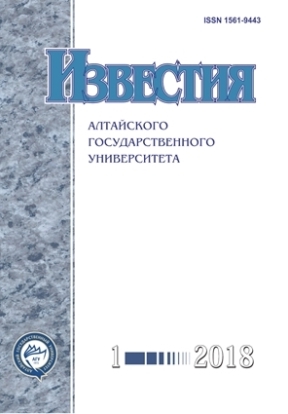The Geometry of a Segment in a Family of Cluster Partitions of a Finite Set
Abstract
The paper considers the metric space of a family of all partitions of a finite set into non-empty disjoint subsets in the cluster distance proposed by the author in one of the previous papers. The relation between this space structure and the partial order generated by the inclusion on a family of partitions is investigated. It is found out that the segment it is coordinated with the partial order when the segment is determined in such space with the boundaries of A and B as the set of those C that the sum of the distances from it to A and B is equal to the distance from A to B. This is expressed by the fact that the distance between partitions corresponds to the smallest path length between them along the chains in the lattice of the corresponding partial order. Nevertheless, the segment defined this way has significant differences from ordinary segments in vector spaces. Therefore, it is not possible to completely carry out the analogy with theorems of usual geometry. The obtained results can be used in the construction of new algorithms for cluster analysis, as well as for finding the exact probability distributions of the distance between, in some sense, a correct partition and a partition constructed from the data of real observations.
DOI 10.14258/izvasu(2018)1-13
Downloads
Metrics
References
Айвазян С.А., Бухштабер В.М., Еню-ков И.С., Мешалкин Л.Д. Прикладная статистика: Классификация и снижение размерности. — М., 1989.
Mills P. Efficient statistical classification of satellite measurements. // International Journal of Remote Sensing. — 2011. — № 32 (21). DOI: 10.1080/01431161.2010.507795
Бериков В.С., Лбов Г.С. Современные тенденции в кластерном анализе // Всероссийский конкурсный отбор обзорноаналитических статей по приоритетному направлению «Информационно-телекоммуникационные системы». — Новосибирск, 2008.
Dronov S.V., Dementjeva E.A. A new approach to post-hoc problem in cluster analysis // Model Assisted Statistics and Applications. - 2012. — Vol. 7, № 1. DOI: 10.3233/MAS-2011-02-01.
Биргхоф Г. Теория решеток. — M. ; 1984.
Gratzer G. Lattice Theory: Foundations. — N.Y.: 2011.
Khamsi M.A. An Introduction to Metric Spaces and Fixed Point Theory. — San Francisco, CA: 2001.
Бураго Д.Ю., Бураго Ю.Д., Иванов С.В. Курс метрической геометрии. — М.; Ижевск, 2004.
Гуров С.И. Булевы алгебры, упорядоченные множества, решетки: определения, свойства, примеры. — М., 2013.
Дьёдонне Ж. Линейная алгебра и элементарная геометрия. — М., 1972.
Kaplansky I. Set Theory and Metric Spaces. — Washington, DC: 2001.
Sackett D.L., Rosenberg W.M., Gray J.A., Haynes R.B., Richardson W.S. Evidence Based Medicine: What It Is and What It Isn’t // BMJ — 1996. - № 312 (7023). D0I:10.1136/bmj.312.7023.71
Bryukhanova E.A., Dronov S.V., Chekryzhova O.I. Spatial Approach to the Analysis of the Employment Data in Siberia Based on the 1897 Census (the Experience of the Multivariate Statistical Analysis of the Districts Data) // Journal of Siberian Federal University. Humanities & Social Sciences. — 2016. — № 7. DOI: 10.17516/1997-13702016-9-7-1651-1660.
Copyright (c) 2018 С.В. Дронов

This work is licensed under a Creative Commons Attribution 4.0 International License.
Izvestiya of Altai State University is a golden publisher, as we allow self-archiving, but most importantly we are fully transparent about your rights.
Authors may present and discuss their findings ahead of publication: at biological or scientific conferences, on preprint servers, in public databases, and in blogs, wikis, tweets, and other informal communication channels.
Izvestiya of Altai State University allows authors to deposit manuscripts (currently under review or those for intended submission to Izvestiya of Altai State University) in non-commercial, pre-print servers such as ArXiv.
Authors who publish with this journal agree to the following terms:
- Authors retain copyright and grant the journal right of first publication with the work simultaneously licensed under a Creative Commons Attribution License (CC BY 4.0) that allows others to share the work with an acknowledgement of the work's authorship and initial publication in this journal.
- Authors are able to enter into separate, additional contractual arrangements for the non-exclusive distribution of the journal's published version of the work (e.g., post it to an institutional repository or publish it in a book), with an acknowledgement of its initial publication in this journal.
- Authors are permitted and encouraged to post their work online (e.g., in institutional repositories or on their website) prior to and during the submission process, as it can lead to productive exchanges, as well as earlier and greater citation of published work (See The Effect of Open Access).








